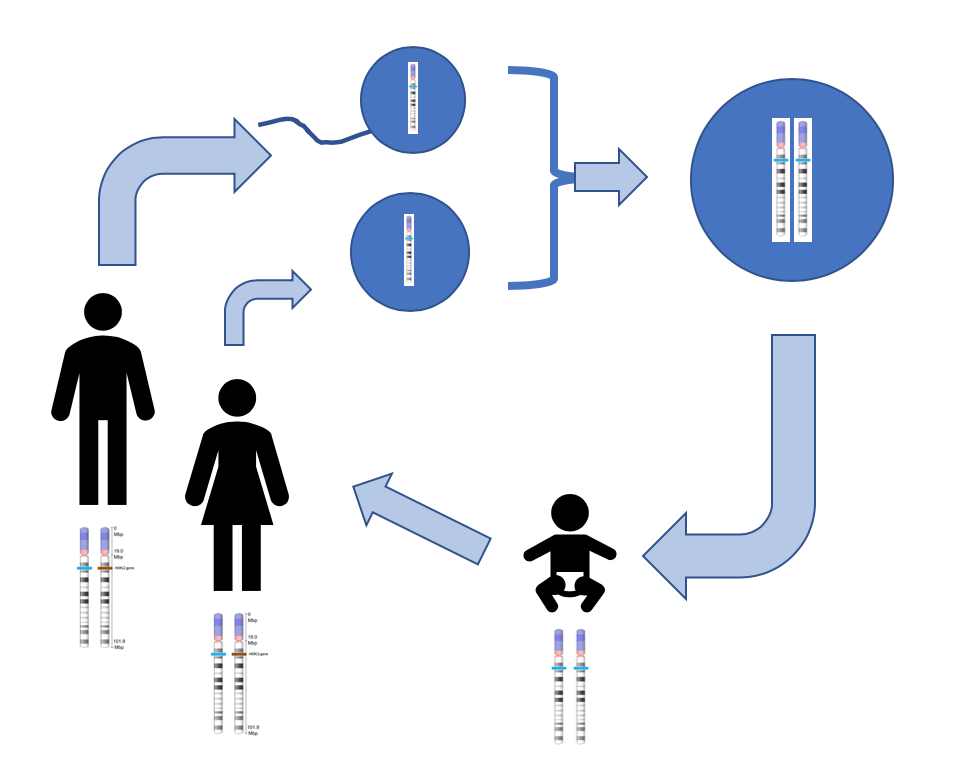Homologous Chromosomes and Sexual Reproduction
It’s very important to keep chromosome number in context as we discuss genetics and inheritance. As discussed in the last section, the somatic cells of a human are diploid (2n). Diploid organisms, such as humans and most mammals, contain two copies of each chromosome creating homologous pairs. Some organisms, such as male bees only have one set of chromosomes and are referred to as monoploid. Organisms that contain four sets of chromosomes, such as wheat, are called tetraploid while those that contain eight sets of chromosomes, such as sugar cane, are called octaploid. The black mulberry plant (Morus nigra) has a high ploidy level with forty-four sets of chromosomes and it is referred to as tetratetracontaploid (Tojyo, 1985).
In Figure 1, both the adult humans are diploid for chromosome 15, along with the other 22 pairs of chromosomes in humans, which are not shown for simplicity. When gametes (eggs or sperm) are created, those cells are haploid (1n) and contain only one copy of each chromosome. During fertilization, the male and female gametes fuse together creating a fertilized egg, or zygote, which again contains two copies of each chromosome and is therefore diploid. The zygote goes through millions of cell divisions to eventually become a baby and then an adult.

Citations:
Tojyo, I.S.A.O., 1985. Research of polyploidy and its application in Morus. Jarq, 18(3), pp.222-227.

